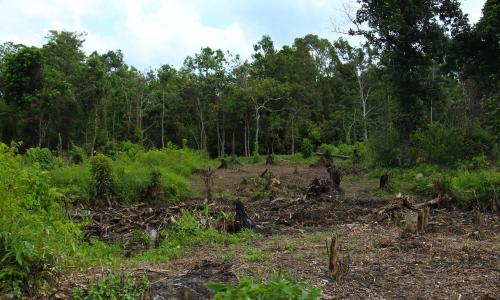
Quality data for forest management
This article was originally published on The Jakarta Post
This year’s World’s Environment Day on June 5th adopts the theme of ‘Connecting People to Nature’, which highlights the importance of forest management to support people’s livelihood. Millions of Indonesians are heavily dependent on forests for food, clean water, livelihood and energy, which make sustainable forests management an important task.
For energy, especially, forests play a critical role. As an enormous source of clean and renewable energy, forests provide electricity for basic human needs.
Biomass, for instance, could be generated by converting crops such as wood, bamboo, jarak tree and sugar using low-emission technology. Forests also hold potential for realizing President Joko “Jokowi” Widodo’s ambition to achieve 100 percent electrification by 2019.
However, spatial analyses by multiple sources indicate that most areas near forests lack access to electricity, including the 2500 households close to forest national parks.
Meeting the ambitious electrification target and providing electricity in those remote areas would require more than the state electricity company PLN's central power system and network. As President Jokowi said during his visit to Maluku, it is challenging for an archipelagic state to possess a national network from Sabang to Merauke.
The construction of electricity transmission and distribution networks from Java, Bali, or Sumatera to other islands can hike electricity prices and sharpen the imbalance in the cost of electricity production between western and eastern Indonesia.
Thus, it is important for each island to have its own independent power plant as well as transmission and distribution networks.
In designing a fit-for-purpose electrification policy especially in eastern parts, availability of high quality data and spatial analyses is imperative. Distributed or decentralized electricity generation, which uses small and local power networks, requires accurate spatial data and analysis, such as population distribution in villages and regencies that have not yet connected to electricity and geospatial hotspots of new and renewable energy potential (EBT).
Spatial analysis of these data is useful as a basis for electrification planning to facilitate the development of appropriate renewable energy-based electricity infrastructure and to provide information needed by investors in EBT development.
On top of being a storehouse of energy, forests also provide a range of environmental benefits and play a vital role in the rural economy, making sustainable forests management necessary. Unfortunately, Indonesia still experiences massive illegal deforestation and to restrain such action, data serves as integral element in creating effective monitoring and law enforcement systems. One of the significant factors of the economic risks is the probability of detection and punishment for the illegal activities.
The presence of data such as a forest’s legal status, licensing, designated areas for energy development and the actual forest cover that could be generated by satellite imagery technology would be powerful for strengthening detection and eventually punishment for illegal deforestation perpetrators.
Public access to data is also important in preventing illegal deforestation. As researchers have found, a strong monitoring system can help reduce offenders’ motivations. One current challenge in forest monitoring is the scant numbers of personnel employed by the government. Public access to data with a qualified complaint management system can result in more guardians to monitor the forest.
Public access to the data related to illegal deforestation can also strengthen monitoring of the judicial process itself and depress potential irregularities within law enforcement.
To enhance forest and energy management in Indonesia, various ministries and agencies in the government have developed databases in forest and energy sectors, but those databases should be integrated with one another with complete and updated data. Unleashing the potential of renewable energy from Indonesia’s forests and preventing illegal logging would require the government to accelerate its current efforts in integrating high quality data in a transparent and timely manner. It is time to make high quality data a reality for a sustainable forest and energy management.